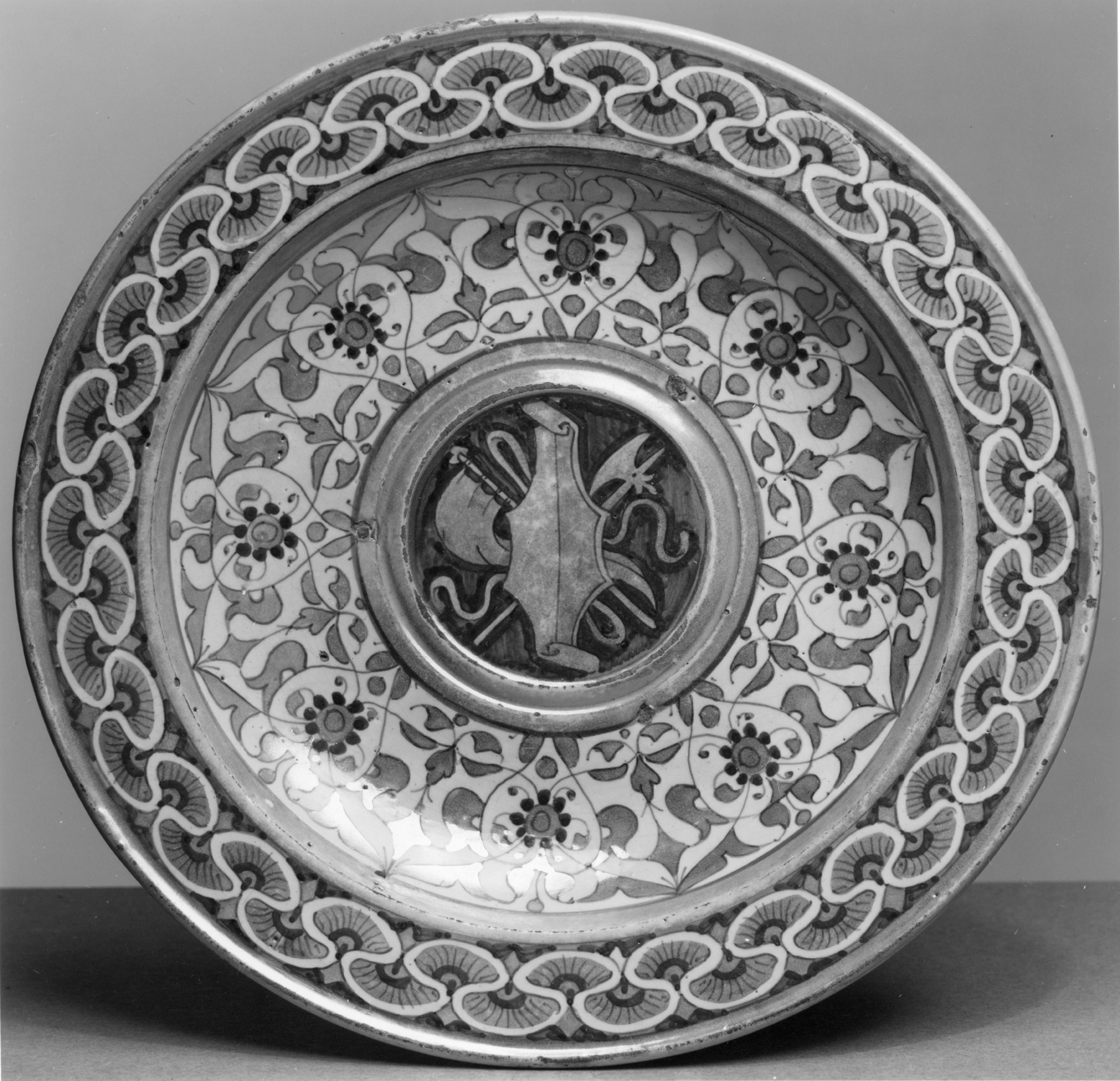Small Ewer Basin with Decorative Motifs
(Renaissance Europe )
This basin, painted in gold luster and blue, utilizes three separate elemental decorative techniques: the center features a cluster of Roman arms and armor, known as trophies; the patterns surrounding the central trophy are known as “arabesques,” and were influenced by imported metalwork and pottery from the Middle East; and finally, the peacock feather decorating the basin’s outermost ring was perhaps derived from a textile pattern. It is thought that the artist worked from a design book, allowing for a combination of such diverse styles. The back of the basin is painted white with three concentric luster circles. Maiolica basins were often paired with jugs or ewers, and were used for hand rinsing in between banquet courses. This basin was likely produced in Deruta, a city with maiolica workshops that specialized in gold luster glazes and ewer basins. To view other sixteenth-century maiolica basins, see 48.1510, 48.1320, 48.1322, 48.1374, and 48.1509; for more on “maiolica,” see 48.1336.
Provenance
Provenance (from the French provenir, 'to come from/forth') is the chronology of the ownership, custody, or location of a historical object.
Alessandro Castellani [date and mode of acquisition unknown]; Henry Walters, Baltimore [date and mode of acquisition unknown]; Walters Art Museum, 1931, by bequest.
Geographies
Italy, Deruta (Place of Origin)
Measurements
1 9/16 x 9 3/4 in. (3.9 x 24.7 cm)
Credit Line
Acquired by Henry Walters
Location in Museum
Not on view
Accession Number
In libraries, galleries, museums, and archives, an accession number is a unique identifier assigned to each object in the collection.
In libraries, galleries, museums, and archives, an accession number is a unique identifier assigned to each object in the collection.
48.1334


